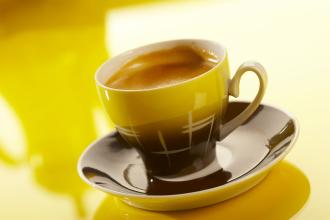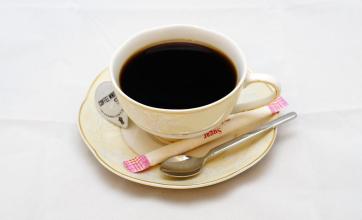Mexican Coffee Flavor with smooth taste introduction to boutique coffee beans in manor production area
Teotihuacán civilization (Teotihuacán) began around 200 BC, about in the central part of modern Mexico, is a civilization born after the death of Olmec civilization, about the same period as the Mayan civilization of ancient Indian civilization, Teotihuacán people in the first year to 150 AD, built a population of about 50,000, can be called the earliest existence of the entire American region of the city hierarchy settlement, the construction of many pyramids. However, unlike other ancient Indian civilizations, which have distinct lineages, the origin of Teotihuacan remains a mystery, and no one has been able to confirm that the civilization had written records. The existence of this civilization is known today not only because they left behind huge traces for analytical proof, but also because some other civilizations of their time mentioned Teotihuacan things in texts or paintings, which is another key reference. The Teotihuacan did not call themselves by this name, which was used by the Toltecs, a successor civilization that existed in the region after the demise of their civilization, to refer to their predecessors in their Nahuatl language, meaning "the land where the gods created man." Although the Toltecs and even later Aztecs had long since disappeared, they still regarded the ancient cities inhabited by the Teotihuacan as sacred places, hence the name.
Spanish rule
The Spanish invaded Mexico in 1519, and in 1521 the Aztec capital Tenochtitlán was conquered by the Spanish and Aztec archenemies, the Tlaxcalteca. But the Spanish did not conquer the Aztecs completely, but did so two centuries later, for two main reasons.
The Aztecs believed in constant human sacrifice for the universe to continue to function, so they sacrificed many people each year, mostly prisoners of war. But in times of peace, the Azreks resorted to a form of "ritual warfare" to obtain prisoners of war. That was why the Traskaltka willingly joined the Spanish forces against the Azreks.
Another important factor was that the Spanish brought plagues and epidemics to America, smallpox, influenza, plague, measles, infecting hundreds of thousands of natives, and these epidemics probably killed about eight million natives.
Mexicans are enthusiastic and optimistic, and the chocolate in Mexican coffee perfectly reflects this. Mexican coffee has different recipes, but the main difference is whether it contains alcohol or not. We will first introduce the non-alcoholic recipe.
Heat a cup of milk, a teaspoon of cinnamon powder and a teaspoon of vanilla powder in a saucepan over medium heat. Keep the heat low. Make sure the milk doesn't boil. Then add cocoa powder, dissolve well and stir well. If you love chocolate, you can substitute chocolate syrup for cocoa powder and milk.
Allow the milk to cool for about 5 minutes before pouring into the coffee. Garnish the coffee with cold cream and a cinnamon stick.
Chocolate and cinnamon aromas blend together to give off a desert flavor. Tasting a cup of coffee like this, you feel like you're walking through the greyish green cacti of the Mexican desert. It's a fun experience.
Mexico's most famous alcoholic drink is tequila, which Mexicans drink with a lick of salt on their tongue and then swallow in a small glass. Tequila is a strong drink, and Mexican coffee made with this drink is very good. If you have enough courage, you may wish to try it.
Tequila Mexican coffee is the basic recipe for non-alcoholic Mexican coffee, except that a small glass of tequila is poured into the bottom of the glass before pouring in milk and coffee, preferably garnished with cream and cinnamon.
Taste characteristics: large particles, with strong sweet, sour and good aroma.
Best BBQ: medium or deep fried.
It is characterized by smooth taste, high acidity, medium alcohol, slightly nutty aftertaste. Sweet, sour, bitter three neutral, appropriate
It is sour, special and elegant in taste. Although Brazilian coffee is of little professional value, it is extremely suitable for blending. Because coffee is produced in large quantities, it is not very expensive.

Important Notice :
前街咖啡 FrontStreet Coffee has moved to new addredd:
FrontStreet Coffee Address: 315,Donghua East Road,GuangZhou
Tel:020 38364473
- Prev

Introduction to the characteristics of Costa Rican Yerzaro Coffee Flavor Manor
Costa Rica accounts for only 0.03% of the world's land area, but with nearly 4% of the world's species, Costa Rica is one of the countries with the richest biological species in the world. 26% of the land area is a national park or nature reserve, including 11 wetlands, 2 biological reserves and 3 World Natural Heritage sites. The national forest coverage rate is 52%. Natural resources include iron, manganese, mercury, bauxite,
- Next

Coffee granules full of El Salvador Himalayan coffee flavor taste manor characteristic boutique coffee
The national emblem of El Salvador was used on September 15, 1912. The national emblem of El Salvador is an equilateral triangle whose three yellow lines represent equality, truth and justice respectively. Five volcanoes rise between the Pacific Ocean and the Atlantic Ocean, symbolizing the five countries in Central America. The pole of freedom and the red cap of freedom stand high on the top of the mountain, radiating the light of freedom and liberation.
Related
- Detailed explanation of Jadeite planting Land in Panamanian Jadeite Manor introduction to the grading system of Jadeite competitive bidding, Red bid, Green bid and Rose Summer
- Story of Coffee planting in Brenka region of Costa Rica Stonehenge Manor anaerobic heavy honey treatment of flavor mouth
- What's on the barrel of Blue Mountain Coffee beans?
- Can American coffee also pull flowers? How to use hot American style to pull out a good-looking pattern?
- Can you make a cold extract with coffee beans? What is the right proportion for cold-extracted coffee formula?
- Indonesian PWN Gold Mandrine Coffee Origin Features Flavor How to Chong? Mandolin coffee is American.
- A brief introduction to the flavor characteristics of Brazilian yellow bourbon coffee beans
- What is the effect of different water quality on the flavor of cold-extracted coffee? What kind of water is best for brewing coffee?
- Why do you think of Rose Summer whenever you mention Panamanian coffee?
- Introduction to the characteristics of authentic blue mountain coffee bean producing areas? What is the CIB Coffee Authority in Jamaica?

